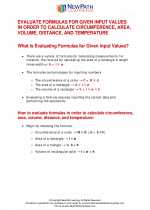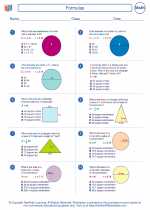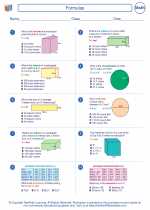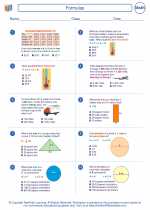Perimeter Study Guide
Perimeter is the distance around the outside of a shape. It is the sum of all the side lengths of the shape.
Formulas for Calculating Perimeter
Here are the formulas for calculating the perimeter of different shapes:
- Rectangle: Perimeter = 2 * (length + width)
- Square: Perimeter = 4 * side length
- Triangle: Perimeter = sum of all three sides
- Circle: Perimeter = 2 * π * radius (or π * diameter)
Example Problems
Let's solve some example problems to practice calculating perimeter:
Find the perimeter of a rectangle with a length of 8 units and a width of 5 units.
Perimeter = 2 * (8 + 5) = 2 * 13 = 26 units
What is the perimeter of a square with a side length of 10 inches?
Perimeter = 4 * 10 = 40 inches
Determine the perimeter of a triangle with side lengths of 7 cm, 9 cm, and 12 cm.
Perimeter = 7 + 9 + 12 = 28 cm
Calculate the perimeter of a circle with a radius of 5 meters. (Use π ≈ 3.14)
Perimeter = 2 * 3.14 * 5 = 31.4 meters
Summary
Perimeter is the total distance around the boundary of a shape. To find the perimeter, add up all the side lengths of the shape. Use the appropriate formula for different shapes, such as rectangles, squares, triangles, and circles.
[Perimeter] Related Worksheets and Study Guides:
.◂Math Worksheets and Study Guides Sixth Grade. Formulas

 Activity Lesson
Activity Lesson
 Worksheet/Answer key
Worksheet/Answer key
 Worksheet/Answer key
Worksheet/Answer key
 Worksheet/Answer key
Worksheet/Answer key
